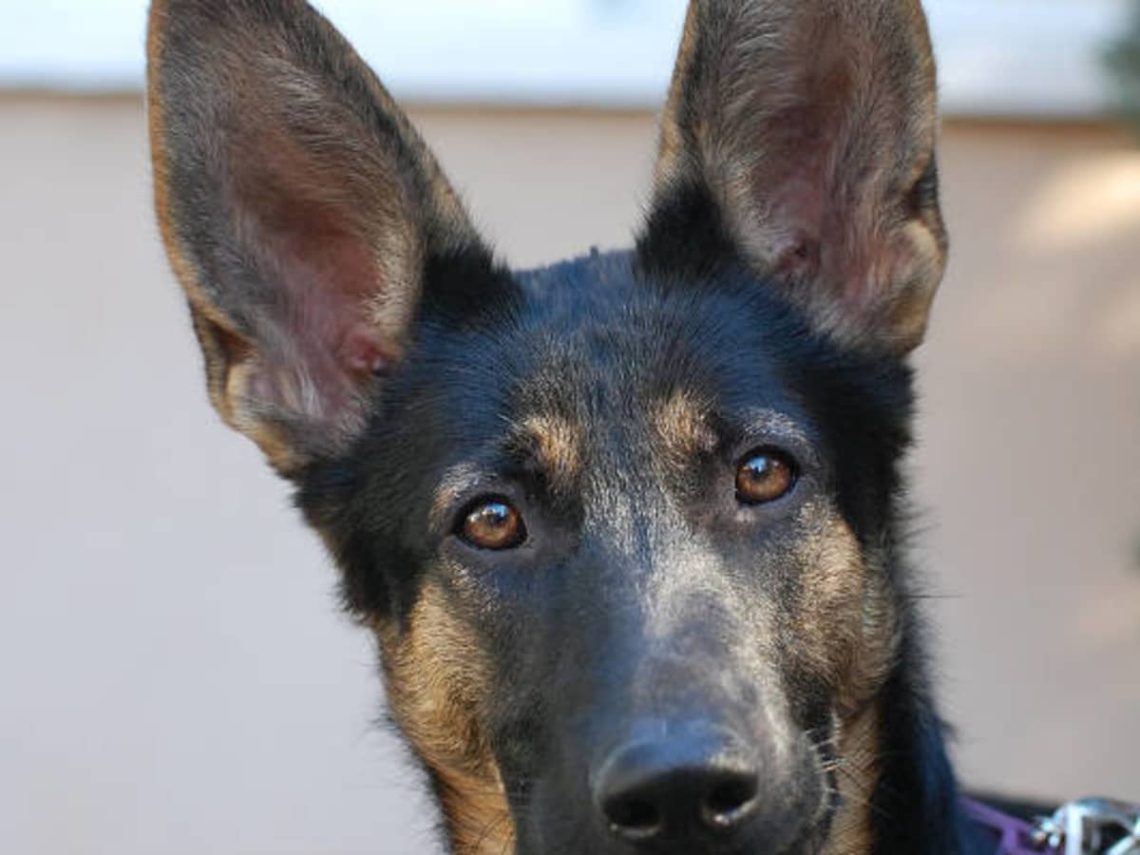
Improper ear fit in a German Shepherd: causes and possible problems when they start to stand up
Probably in nature there is no other breed of dog that has such a beautiful and harmonious exterior as the German Shepherds. And an important detail of the shepherd’s exterior is the correct, classic fit of the ears.
About the setting of the ears of a German shepherd, namely why sometimes their ears do not stand up, and how this problem can be solved, will be discussed in this article.
Contents
Ear placement in German Shepherds
According to the breed standard, a German Shepherd must have the following ears:
- size – medium;
- shape – pointed;
- the base of the ears is wide;
- landing – high-ranking, vertically standing;
- landing direction – the ends of the ears are directed forward, up.
If the German Shepherd’s ears are hanging or broken, or hanging, or standing like a house, then this is considered a marriage.
Many are interested in the question – when should the ears of a German Shepherd puppy stand up?
Usually they begin to get up little by little from the age of two months, and by five months this process is over. True, there are exceptions when they finally get up at the age of six or even eight months.
If at four months the ears did not stand up at least a little, then need to start acting immediatelybecause the older the dog, the harder it will be to place them correctly.
Causes of misfit ears
Causes of incorrect landing can be divided into two groups:
- congenital
- acquired.
Congenital causes:
- heredity – a similar problem in the puppy’s parents;
- physique (constitution) of a puppy – friability and heavy bones.
Acquired Causes:
- ear injuries (creases);
- ear diseases;
- lack of vitamins and minerals in the dog’s diet due to which the cartilage tissue is not fully formed;
- various diseases that slow down the physical development of the puppy;
- overfeeding;
- lack of physical activity;
- keeping a puppy at a low ambient temperature.
Prevention of abnormal ear development
In most cases, it is enough to follow the rules for keeping and caring for German Shepherd puppies, not to be lazy take appropriate preventive measures and then the likelihood that your pet will have an incorrect fit of the ears will decrease significantly.
So, in order for everything to be good, you must adhere to the following rules in the maintenance and care of the puppy.
- Provide the puppy with a rational, nutritious diet with the addition of vitamins and trace elements that are necessary for the formation of cartilage tissue. For this purpose, you can use the following dressings: “Pax Plus Forte”, “Antiox Plus”, “Senior”, “Mega”. The puppy’s diet should include fish and dairy products. Some veterinarians recommend adding chalk to food, only it must be peeled and finely crushed. In no case do not overfeed the puppy – excess weight has never added health to anyone. It is necessary to observe the golden mean in feeding the puppy.
- Avoid ear injuries, regularly clean them of sulfur and dirt, treat ear diseases in a timely manner.
- Tirelessly monitor the puppy’s health – past illnesses can give a variety of complications, including disrupting the function of bone and cartilage tissue formation.
- More walking and playing with the puppy – high physical activity stimulates the physical development of the puppy.
- Observe a comfortable temperature regime for keeping a puppy – low temperature does not at all contribute to the formation of cartilage tissue.
- Massage your ears regularly. Massage is done with your fingertips with gentle movements, from the base to the top edge. This procedure improves blood flow, thereby accelerating the formation of cartilage.
Ways to raise the ears in German Shepherd puppies
But, if, nevertheless, the puppy’s ears do not want to stand up correctly, then more effective measures are needed. Below are some methods for dealing with this problem in a German Shepherd puppy.
Before starting the procedure, you need to examine the dog and make sure that there are no ear diseases.
Adhesive gluing
To determine the need for gluing with a plaster, it is necessary gently palpate the entire ear shepherds. So they are looking for a “weak spot” that can be distinguished by touch.
The found weak point has the form of either a small area (spot) or a strip. If you pinch this place with your fingers, then the puppy’s ear should immediately rise. If this place is in the upper part of the ear, then it will rise by itself and remain in a standing position – in this case, gluing is not necessary. Worse, if the weak spot found in the form of a strip is located across the entire auricle, then there is a hall and you can’t do without gluing.
Best for gluing hypoallergenic breathable patch, the use of which does not cause controversy of the skin of the auricle.
The sequence of actions when gluing the ears.
- First, the auricle on both sides is carefully trimmed.
- Next, the auricle is thoroughly wiped to remove wax and dirt. It can be done hygienic wet wipes for dogs, alcohol solution or hydrogen peroxide.
- Two strips are cut from the patch, the dimensions of which in length and width approximately correspond to the size of the ear. These strips are glued to each other – the non-adhesive side is glued to the adhesive side.
- A double strip of patch is glued to the inner surface of the ear for the entire length – from the tip to the upper edge of the ear canal.
- The puppy’s ear must be lifted and twisted into a tube, the inside of which should be hollow. For vertical fixation, a piece of patch is glued around the base of the auricle.
If necessary, a similar procedure is carried out with the second ear. Then the glued ears are fixed together with a patch. It is necessary to wear the patch for 10-12 days, after which it is carefully removed.
Use of curlers
Step by step description of the method.
- First you need to thoroughly clean the ears. To do this, use the tools described above.
- For further steps, you will need large sponge foam curlers, into the holes of which you need to insert a pencil with an eraser (with the eraser forward).
- Apply adhesive solution “Permatex Super Weatherstrip 3” or other adhesive of similar characteristics to the surface of the curler. Let the glue dry for 2-3 minutes. It is better to work with rubber gloves, as the glue is very sticky.
- At the end of the curler, put a piece of cotton and place the curler inside the ear just above the top edge, holding it vertically.
- Wrap the edges of the ears around the curlers and hold until they stick to them.
Foam rollers are very light and therefore the dog will get used to them very quickly. After 2-3 weeks, the curlers themselves will begin to peel off and can be easily removed.
Instead of curlers, you can use special tabs that can be bought at pet stores or ordered online.
Foam tab instead of curlers
This method can be called a simplified version of the previous method – only foam rubber is used instead of curlers.
Step by step description of the method.
- First, a haircut and wiping of the auricle is carried out.
- A piece is cut out of foam rubber, the thickness (diameter) of which is approximately half the width of the auricle of a German shepherd, and the length is slightly less than the distance from the ear canal to the upper edge of the ear.
- The ear is lifted vertically and the cut piece of foam rubber is placed in the auricle. Then it wraps around the foam and fixed with several layers of hyperallergenic plaster.
- For a stable fixation of the ear in a vertical position, it is necessary to stick a patch around the base of the auricle.
After 14-16 days, the ears of the shepherd puppy should take the correct vertical position. In some cases, the problem may take up to 4 weeks to resolve.





